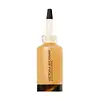What's inside
What's inside
 Key Ingredients
Key Ingredients

 Benefits
Benefits

 Concerns
Concerns

No concerns
 Ingredients Side-by-side
Ingredients Side-by-side

Water
Skin ConditioningGlycerin
HumectantDiglycerin
HumectantDimethyl Isosorbide
SolventSaccharomyces Ferment Filtrate
HumectantPentylene Glycol
Skin ConditioningPolyglyceryl-4 Caprate
Emulsifying1,2-Hexanediol
Skin ConditioningGlycereth-26
HumectantNiacinamide
SmoothingBetaine
HumectantEmpetrum Nigrum Fruit Juice
Skin ConditioningPanthenol
Skin ConditioningYeast Extract
Skin ConditioningPavlova Lutheri Extract
Skin ConditioningCaprylic/Capric Triglyceride
MaskingOlea Europaea Fruit Extract
BleachingSodium Hyaluronate
HumectantCaprylyl Glycol
EmollientHyaluronic Acid
HumectantSodium Polyacrylate
AbsorbentAcrylates/Vinyl Isodecanoate Crosspolymer
Emulsion StabilisingMaltodextrin
AbsorbentArginine
MaskingDipropylene Glycol
HumectantGlyceryl Polyacrylate
Leuconostoc/Radish Root Ferment Filtrate
AntimicrobialTocopherol
AntioxidantTrisodium Ethylenediamine Disuccinate
Potassium Sorbate
PreservativeBenzyl Alcohol
PerfumingSorbic Acid
PreservativeBenzoic Acid
MaskingWater, Glycerin, Diglycerin, Dimethyl Isosorbide, Saccharomyces Ferment Filtrate, Pentylene Glycol, Polyglyceryl-4 Caprate, 1,2-Hexanediol, Glycereth-26, Niacinamide, Betaine, Empetrum Nigrum Fruit Juice, Panthenol, Yeast Extract, Pavlova Lutheri Extract, Caprylic/Capric Triglyceride, Olea Europaea Fruit Extract, Sodium Hyaluronate, Caprylyl Glycol, Hyaluronic Acid, Sodium Polyacrylate, Acrylates/Vinyl Isodecanoate Crosspolymer, Maltodextrin, Arginine, Dipropylene Glycol, Glyceryl Polyacrylate, Leuconostoc/Radish Root Ferment Filtrate, Tocopherol, Trisodium Ethylenediamine Disuccinate, Potassium Sorbate, Benzyl Alcohol, Sorbic Acid, Benzoic Acid
Water
Skin ConditioningPentylene Glycol
Skin ConditioningHuman Neonatal Fibroblast Conditioned Media
Skin ConditioningGlycereth-7 Triacetate
EmollientShea Butter Ethyl Esters
EmollientGlycerin
HumectantEthoxydiglycol
HumectantLactococcus Ferment Lysate
Skin ConditioningWhey Protein
Skin ConditioningChlorella Vulgaris Extract
Skin ConditioningSaccharide Isomerate
HumectantDimer Tripeptide-43
Vitis Vinifera Flower Cell Extract
MaskingPyrus Malus Fruit Extract
Skin ConditioningHydroxyacetophenone
AntioxidantTocopheryl Acetate
AntioxidantPropanediol
SolventXanthan Gum
EmulsifyingPolyacrylate Crosspolymer-6
Emulsion StabilisingPolyacrylate-13
Polyisobutene
Sclerotium Gum
Emulsion StabilisingPEG-12 Dimethicone
Skin ConditioningLecithin
EmollientPullulan
Butylene Glycol
HumectantSodium Citrate
BufferingPolysorbate 20
EmulsifyingAminomethyl Propanol
BufferingDisodium EDTA
Phenoxyethanol
PreservativeEthylhexylglycerin
Skin ConditioningWater, Pentylene Glycol, Human Neonatal Fibroblast Conditioned Media, Glycereth-7 Triacetate, Shea Butter Ethyl Esters, Glycerin, Ethoxydiglycol, Lactococcus Ferment Lysate, Whey Protein, Chlorella Vulgaris Extract, Saccharide Isomerate, Dimer Tripeptide-43, Vitis Vinifera Flower Cell Extract, Pyrus Malus Fruit Extract, Hydroxyacetophenone, Tocopheryl Acetate, Propanediol, Xanthan Gum, Polyacrylate Crosspolymer-6, Polyacrylate-13, Polyisobutene, Sclerotium Gum, PEG-12 Dimethicone, Lecithin, Pullulan, Butylene Glycol, Sodium Citrate, Polysorbate 20, Aminomethyl Propanol, Disodium EDTA, Phenoxyethanol, Ethylhexylglycerin
Ingredients Explained
These ingredients are found in both products.
Ingredients higher up in an ingredient list are typically present in a larger amount.
Glycerin is already naturally found in your skin. It helps moisturize and protect your skin.
A study from 2016 found glycerin to be more effective as a humectant than AHAs and hyaluronic acid.
As a humectant, it helps the skin stay hydrated by pulling moisture to your skin. The low molecular weight of glycerin allows it to pull moisture into the deeper layers of your skin.
Hydrated skin improves your skin barrier; Your skin barrier helps protect against irritants and bacteria.
Glycerin has also been found to have antimicrobial and antiviral properties. Due to these properties, glycerin is often used in wound and burn treatments.
In cosmetics, glycerin is usually derived from plants such as soybean or palm. However, it can also be sourced from animals, such as tallow or animal fat.
This ingredient is organic, colorless, odorless, and non-toxic.
Glycerin is the name for this ingredient in American English. British English uses Glycerol/Glycerine.
Learn more about GlycerinPentylene glycol is typically used within a product to thicken it. It also adds a smooth, soft, and moisturizing feel to the product. It is naturally found in plants such as sugar beets.
The hydrophilic trait of Pentylene Glycol makes it a humectant. As a humectant, Pentylene Glycol helps draw moisture from the air to your skin. This can help keep your skin hydrated.
This property also makes Pentylene Glycol a great texture enhancer. It can also help thicken or stabilize a product.
Pentylene Glycol also acts as a mild preservative and helps to keep a product microbe-free.
Some people may experience mild eye and skin irritation from Pentylene Glycol. We always recommend speaking with a professional about using this ingredient in your routine.
Pentylene Glycol has a low molecular weight and is part of the 1,2-glycol family.
Learn more about Pentylene GlycolWater. It's the most common cosmetic ingredient of all. You'll usually see it at the top of ingredient lists, meaning that it makes up the largest part of the product.
So why is it so popular? Water most often acts as a solvent - this means that it helps dissolve other ingredients into the formulation.
You'll also recognize water as that liquid we all need to stay alive. If you see this, drink a glass of water. Stay hydrated!
Learn more about Water